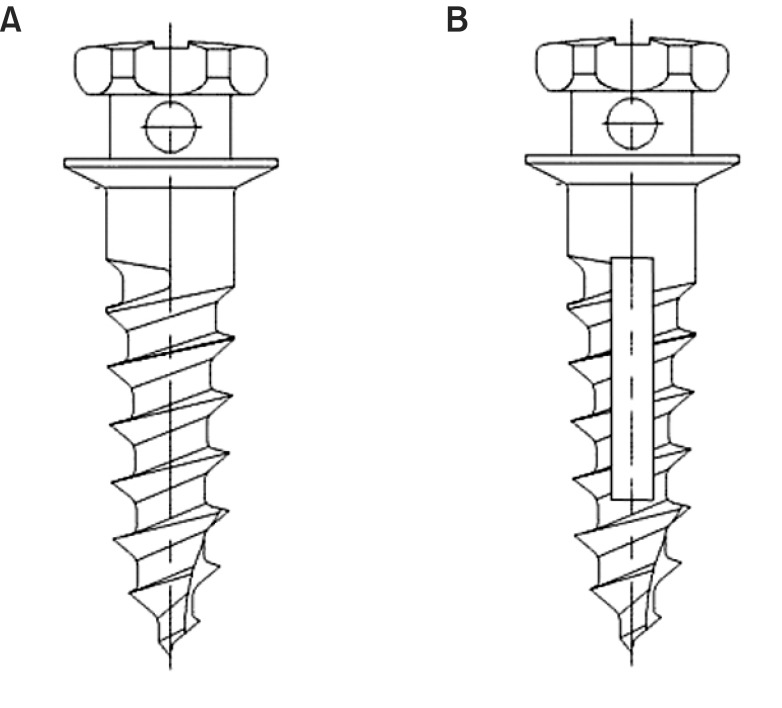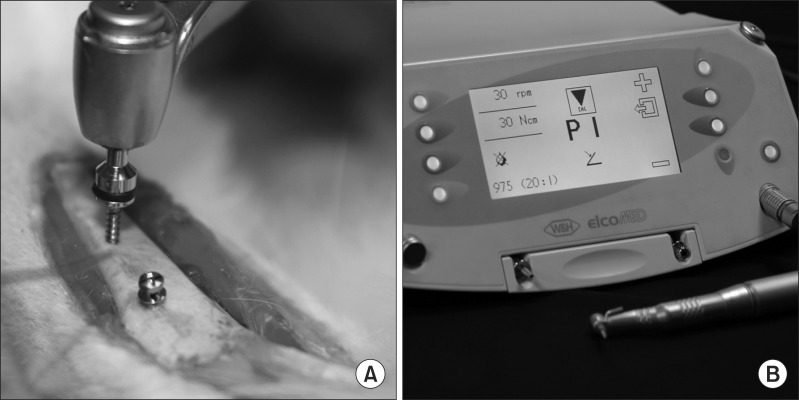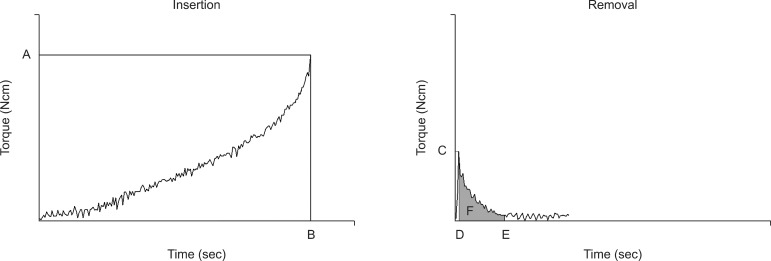J Korean Assoc Oral Maxillofac Surg.
2013 Dec;39(6):269-273. 10.5125/jkaoms.2013.39.6.269.
Effect of rotation bump on removal torque of orthodontic mini-implants
- Affiliations
-
- 1Department of Orthodontics and Dental Research Institute, School of Dentistry, Seoul National University, Seoul, Korea.
- 2Department of Orthodontics, Section of Dentistry, Seoul National University Bundang Hospital, Seongnam, Korea. kimjongwan@hotmail.com
- 3Department of Oral and Maxillofacial Surgery, Section of Dentistry, Seoul National University Bundang Hospital, Seongnam, Korea.
- 4Department of Oral and Maxillofacial Surgery and Dental Research Institute, School of Dentistry, Seoul National University, Seoul, Korea.
- KMID: 1960976
- DOI: http://doi.org/10.5125/jkaoms.2013.39.6.269
Abstract
OBJECTIVES
This study is designed to evaluate the mechanical stability of orthodontic mini-implants with vertical grooves in rabbits.
MATERIALS AND METHODS
This study was done from March 2011 to February 2012 in Dental Research Institute of Seoul National University. Thirty-two mini-implants in the control group and 32 in the rotation bump (RB) group were inserted in the tibias of 16 rabbits and were removed after two weeks and four weeks, respectively. The maximum insertion torque (MIT), maximum removal torque (MRT), torque ratio (TR) of MRT to MIT and removal angular momentum (RAM) were all measured at the time of removal.
RESULTS
There were no significant differences between the two groups in MIT and MRT at two weeks or four weeks. However, TR and RAM at four weeks in the RB group were significantly higher than in the control group (P<0.05). TR of the RB group was significantly increased at four weeks (P<0.05). In both groups, RAM at four weeks was significantly higher than at two weeks (P<0.05).
CONCLUSION
These results suggest that RB of the mini-implant could provide resistance to the removal rotation, although it did not increase the MRT.
Keyword
MeSH Terms
Figure
Cited by 1 articles
-
The current problem with journal review systems
Yong-Geun Choi
J Korean Assoc Oral Maxillofac Surg. 2014;40(2):98-99. doi: 10.5125/jkaoms.2014.40.2.98.
Reference
-
1. Chen Y, Kyung HM, Gao L, Yu WJ, Bae EJ, Kim SM. Mechanical properties of self-drilling orthodontic micro-implants with different diameters. Angle Orthod. 2010; 80:821–827. PMID: 20578851.
Article2. Kim YK, Kim YJ, Yun PY, Kim JW. Effects of the taper shape, dual-thread, and length on the mechanical properties of mini-implants. Angle Orthod. 2009; 79:908–914. PMID: 19705930.
Article3. Herrmann I, Lekholm U, Holm S, Kultje C. Evaluation of patient and implant characteristics as potential prognostic factors for oral implant failures. Int J Oral Maxillofac Implants. 2005; 20:220–230. PMID: 15839115.4. Reynders R, Ronchi L, Bipat S. Mini-implants in orthodontics: a systematic review of the literature. Am J Orthod Dentofacial Orthop. 2009; 135:564.e1–564.e19. PMID: 19409331.
Article5. Kim JW, Baek SH, Kim TW, Chang YI. Comparison of stability between cylindrical and conical type mini-implants. Mechanical and histological properties. Angle Orthod. 2008; 78:692–698. PMID: 18302470.6. Kim TW, Baek SH, Kim JW, Chang YI. Effects of microgrooves on the success rate and soft tissue adaptation of orthodontic miniscrews. Angle Orthod. 2008; 78:1057–1064. PMID: 18947283.
Article7. Kim JW, Ahn SJ, Chang YI. Histomorphometric and mechanical analyses of the drill-free screw as orthodontic anchorage. Am J Orthod Dentofacial Orthop. 2005; 128:190–194. PMID: 16102403.
Article8. Sullivan DY, Sherwood RL, Collins TA, Krogh PH. The reverse-torque test: a clinical report. Int J Oral Maxillofac Implants. 1996; 11:179–185. PMID: 8666448.9. Linkow LI. The press-fit/tap-in, anti-rotational vent-plant cylinder implant. J Oral Implantol. 1995; 21:40–45. PMID: 7473870.10. Ueda M, Matsuki M, Jacobsson M, Tjellström A. Relationship between insertion torque and removal torque analyzed in fresh temporal bone. Int J Oral Maxillofac Implants. 1991; 6:442–447. PMID: 1820313.11. Consolo U, Travaglini D, Todisco M, Trisi P, Galli S. Histologic and biomechanical evaluation of the effects of implant insertion torque on peri-implant bone healing. J Craniofac Surg. 2013; 24:860–865. PMID: 23714897.
Article12. Lee SY, Piao C, Heo SJ, Koak JY, Lee JH, Kim TH, et al. A comparison of bone bed preparation with laser and conventional drill on the relationship between implant stability quotient (ISQ) values and implant insertion variables. J Adv Prosthodont. 2010; 2:148–153. PMID: 21264194.
Article13. Kim SH, Lee SJ, Cho IS, Kim SK, Kim TW. Rotational resistance of surface-treated mini-implants. Angle Orthod. 2009; 79:899–907. PMID: 19705943.
Article14. Costa A, Raffainl M, Melsen B. Miniscrews as orthodontic anchorage: a preliminary report. Int J Adult Orthodon Orthognath Surg. 1998; 13:201–209. PMID: 9835819.15. Kwon TK, Lee HJ, Min SK, Yeo IS. Evaluation of early bone response to fluoride-modified and anodically oxidized titanium implants through continuous removal torque analysis. Implant Dent. 2012; 21:427–432. PMID: 22971981.
Article
- Full Text Links
- Actions
-
Cited
- CITED
-
- Close
- Share
- Similar articles
-
- Effect of cutting flute length and shape on insertion and removal torque of orthodontic mini-implants
- Effect of dual pitch mini-implant design and diameter of an orthodontic mini-implant on the insertion and removal torque
- Removal torque of sandblasted large grit, acid etched treated mini-implant
- Effects of surface treatment on the osseointegration potential of orthodontic mini-implant
- Geometrical design characteristics of orthodontic mini-implants predicting maximum insertion torque




